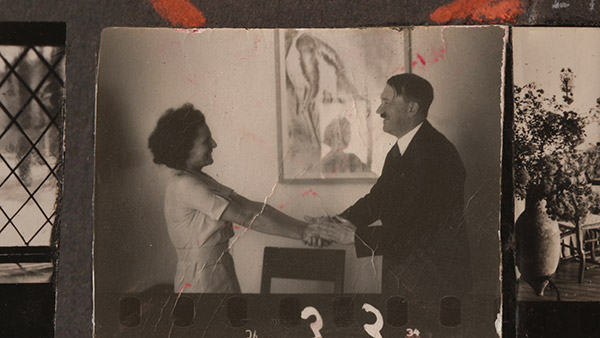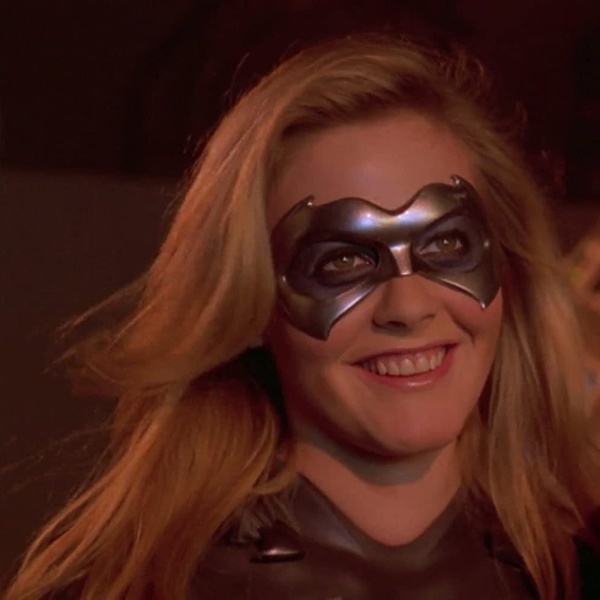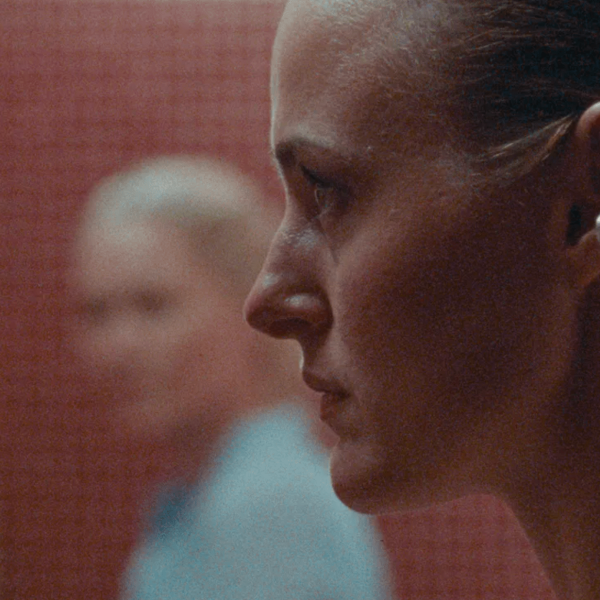For some problematic filmmakers there’s the mental task of “separating the art from the artist.” And then there are the intellectual hurdles you need to jump over for an aesthetic appreciation of Leni Riefenstahl. The Nazi propagandist was absolutely a technical innovator, especially with her multi-hour documentary portrait of the 1936 Olympics, “Olympia” — outright establishing tropes for filming sports for movies and TV ever since, with the use of a narrator, slow-motion, unique camera placements (including from a hot-air balloon), and crowd reaction shots. The problem is that many of those crowd reaction shots focus on Adolf Hitler.
And that’s even before you consider “Triumph of the Will,” Riefenstahl’s documentary about the 1934 Nazi Party rally at Nuremberg that unambiguously frames Hitler in low-angle shots against the sky as a heroic figure. Or the well-documented fact that she may have been his favorite filmmaker, and that they spent significant time together. That she did more to glorify and popularize the Nazi regime on film than anyone else.
So it’s remarkable to consider the unambiguously glowing terms under which certain film historians, and even mainstream critics and entertainment journalists, have regarded her over the past nine decades. Pauline Kael said of “Triumph of the Will” and “Olympia” that they were “the two greatest films ever directed by a woman.” Roger Ebert said in reviewing a 1993 documentary about her that Riefenstahl initiated herself, “As the story of an extraordinary life, as the reconstruction of the career of one of the greatest of film artists, as the record of an ideological debate, as a portrait of an amazing old woman.” The inaugural Telluride Film Festival hosted her in 1974. Quentin Tarantino told Der Spiegel “she was the best director who ever lived.”
With his new documentary “Riefenstahl,” Andres Veiel absolutely sets out to offer a different perspective: Glorify her at your peril. Working with producer Sandra Maischberger, who gained access to Riefenstahl’s estate following the director’s death in 2003 and the death of her life partner in 2016, Veiel constructs a narrative showing how Riefenstahl’s warm reception in the decades after the end of World War II is something she actively cultivated herself. And many bought it.
Veiel jumps around in the timeline of her 101-year life, but much of the structure involves discussing biographical details about her career as a state-sponsored artist in the Third Reich and the aggressive PR campaign she launched over decades to address every possible complaint. Riefenstahl never denied that the Holocaust happened, or that other atrocities had, and she professed horror to everything that was ostensibly revealed to her only at the war’s end about what Hitler’s regime had done. She insisted that she cared only about art, not politics, and that she was willing to accept funding from the Third Reich because they were willing to give her unlimited resources. That she was just hopelessly naive. And that’s why you can separate her art from its Nazi ideology. She was just, as the Allied occupying forces concluded in the late 1940s, a “fellow traveler” to the Nazis. Not a Nazi herself.
But Veiel and Maischberger build a compelling case that she was in fact a Nazi, right up until the end of her life. Maischberger got access to over 700 boxes of archive materials that had been in Riefenstahl’s possession: She had recorded phone calls in the ’60s and ’70s with her friend, the Nazi architect Albert Speer, that show her longing for the old days; we see her notes organizing hate mail she received into different categories based on the people who sent them (one category was indeed listed as “Jews”); we see notes that offer different accounts of key moments in her work for the Third Reich than she offered in her memoir, as if she’s trying to get her story straight; letters in which she talks about her values having been “murdered” with Germany’s loss in the war. And then Veiel intercuts this material with extensive interview footage from the ’60s, ’70s, ’80s, and ’90s, in which she went a forceful campaign of defense. On one 1976 appearance on the talk show “Je später der Abend” she defended her desire to focus only on “beauty” and beautiful people in her films, emphatically answering “no” to the idea of ever being interested in filming disabled people. Then she kept many of the letters she received, and recorded voice mails left to her, from those who applauded her views.
That’s a hugely important revelation. Obviously, millions and millions of Germans who had been Nazi supporters were still alive in 1976, but Riefenstahl appears to have been a catalyst for them to feel more open in expressing that they were still unapologetic themselves about what had happened during the Third Reich.
And there’s the lying. Maischberger, a journalist, interviewed Riefenstahl in 2002 and says she recognized right away that the director was lying to her. Veiel juxtaposes interview clips of Riefenstahl with other footage that absolutely contradicts her claims. In the 1960s and ’70s, she had become fascinated by the Nuba people of Sudan, and authored several photo books about them. When one interviewer asked her if she felt she was contaminating their culture by spending so much time with them, she said she only photographed them from afar with a telephoto lens, something very easily disproven by the photos themselves.
Veiel even makes a compelling case that she wasn’t totally unaware of the Third Reich’s atrocities, assembling a timeline of how she served the state as a war photographer in late 1939 after the Wehrmacht marched into Poland. And then she abruptly quit not long after. There’s some evidence that German soldiers, in receiving orders from her to clear a shot she wanted to take, instead massacred Jewish people and others who would have been in her frame, and that she witnessed it.
If there’s a flaw to Veiel’s film it’s that he doesn’t connect the dots as obviously as he probably should. Especially when it comes to the idea that Riefenstahl was not just an artist who happened to take commissions from the Nazis to pursue her work, but only made art because she was a Nazi: Why else did she stop making films altogether after the end of the war? Was it because of her “murdered ideals”? That’s a verdict you can come away with in watching “Riefenstahl” but it’s one you have to formulate yourself. Veiel stops just short of pronouncing absolute judgment.
It would also have been worthwhile to make a case for why Riefenstahl’s images — her whole concept of beauty above all, human figures flattened into symbols, and that an image simply being arresting is enough to justify anything — connects to the images that have power today. Many of her techniques are still with us, and some are still being used for nefarious purposes, especially with the far-right gaining power again. Veiel doesn’t quite say why considering Riefenstahl today is an urgent business, why setting the record straight about her matters so much. Symbolic and stylized though her images were, they were never devoid of meaning.
Which is why you can’t “separate the art from the artist” with Riefenstahl. Her art was an expression of who she was willing to cater to, who she was willing to glorify. Her defense of her films for the Third Reich amounts to claiming that they’re pure art objects that exist unto themselves with no meaning at all. Which would be vacuity at best, idiocy at worst. But of course, it’s a lie: The message behind them is the only reason those films exist.
Grade: B
“Riefenstahl” world premiered at the 2024 Venice Film Festival. It is currently seeking U.S. distribution.
Want to stay up to date on IndieWire’s film reviews and critical thoughts? Subscribe here to our newly launched newsletter, In Review by David Ehrlich, in which our Chief Film Critic and Head Reviews Editor rounds up the best reviews, streaming picks, and offers some new musings, all only available to subscribers.



